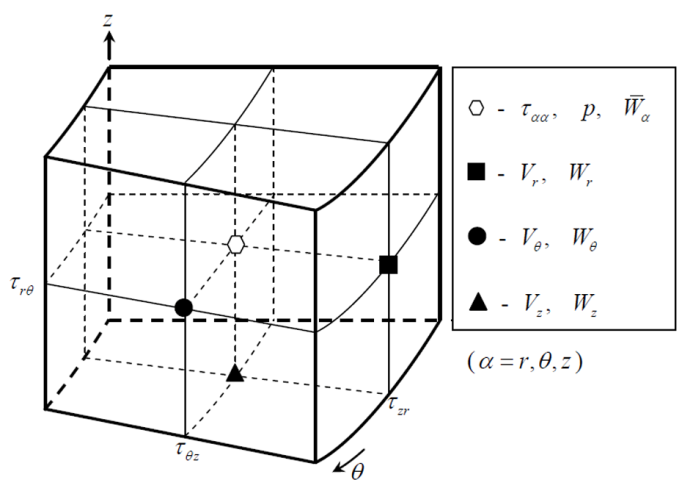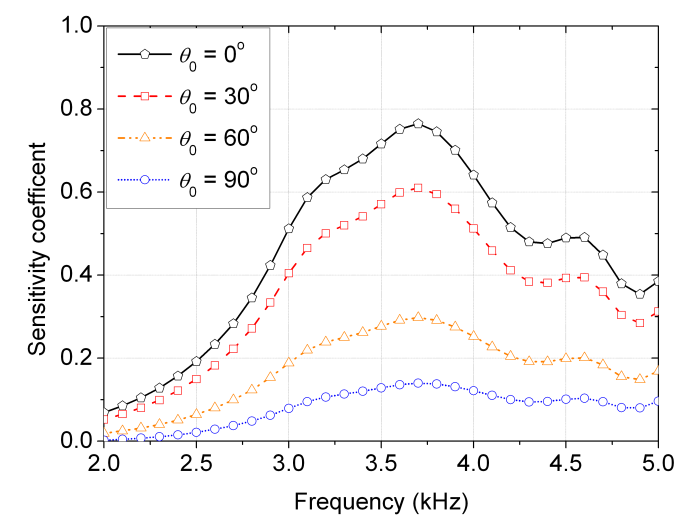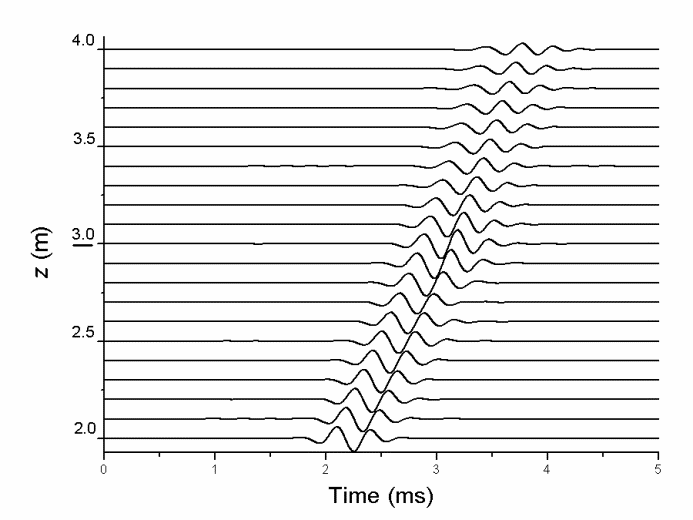Sedimentary rocks can exhibit strong permeability anisotropy due to layering, pre-stresses and the presence of aligned micro-cracks or fractures. The numerical simulation of elastic waves in such a kind of medium has not been solved before.
As a result, HE Xiao, HU Hengshan and WANG Xiuming from the Ultrasonic Physics and Exploration Laboratory, Institute of Acoustics, Chinese Academy of Sciences developed a modified cylindrical finite-difference algorithm. The algorithm is to simulate the elastic wave fields in a saturated poroelastic medium with arbitrary anisotropy of permeability and tortuosity.
This modified algorithm can be implemented in the numerical modeling of acoustic logs as well as exploration seismic waves in a porous medium with permeability anisotropy – a physical model more close to real formation with aligned cracks.

Fig. 1 A staggered grid cell with discredited points of velocity and stress components (Picture from IACAS).
A linear interpolation process is proposed to guarantee the leapfrog finite difference scheme for the generalized dynamic equations and Darcy’s law for anisotropic porous media (Fig.1). In this research, the modified algorithm is first validated by comparison against the analytical solution when the borehole axis is parallel to the symmetry axis of the formation. The same algorithm is then used to numerically model the dipole acoustic log in a borehole with its axis being arbitrarily deviated from the symmetry axis of transverse isotropy.
The simulation results show that the amplitudes of flexural modes vary with the dipole orientation because the permeability tensor of the formation is dependent on the wellbore azimuth. It is revealed that the attenuation of the flexural wave increases approximately linearly with the radial permeability component in the direction of the transmitting dipole.
Particularly, when the borehole axis is perpendicular to the symmetry axis of the formation, it is possible to estimate the anisotropy of permeability by evaluating attenuation of the flexural wave using a cross-dipole sonic logging tool according to the results of sensitivity analyses (Fig.2).
Finally, the dipole sonic logs in a deviated borehole surrounded by a stratified porous formation are modeled using the proposed finite difference code (Fig.3). Numerical results show that the arrivals and amplitudes of transmitted flexural modes near the layer interface are sensitive to the wellbore inclination.

Fig. 2 Sensitivity coefficients of flexural wave attenuation with respect to the horizontal permeability (κH). The dipole source orientation θ0 varies from 0°to 90°. The borehole is perpendicular to the symmetry axis of transverse isotropy (β = 90◦)(Picture from IACAS).

Fig. 3 Synthetic full waves in a 45°inclined borehole surrounded by a horizontally layered formation composed of Medium A and Medium B. The receiver-to-source distances (z) range from 2.0 to 4.0 m with steps of 0.1 m. The layer interface is positioned at z = 3.0 m. Each waveform is normalized with respect to maximum amplitude of the whole series (Picture from IACAS).
This research result was published on the recently issued Geophysical Journal International (Vol. 192, No. 1, Pages 359-374, January, 2013).


